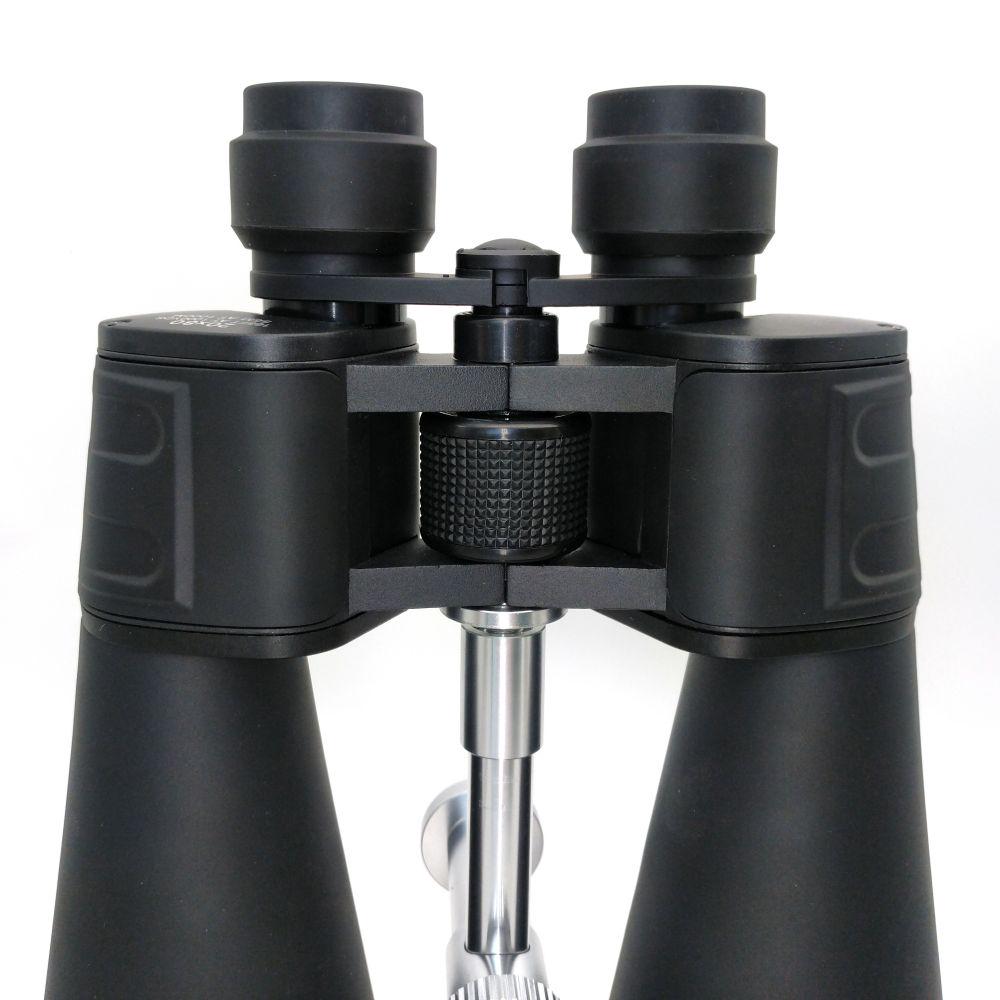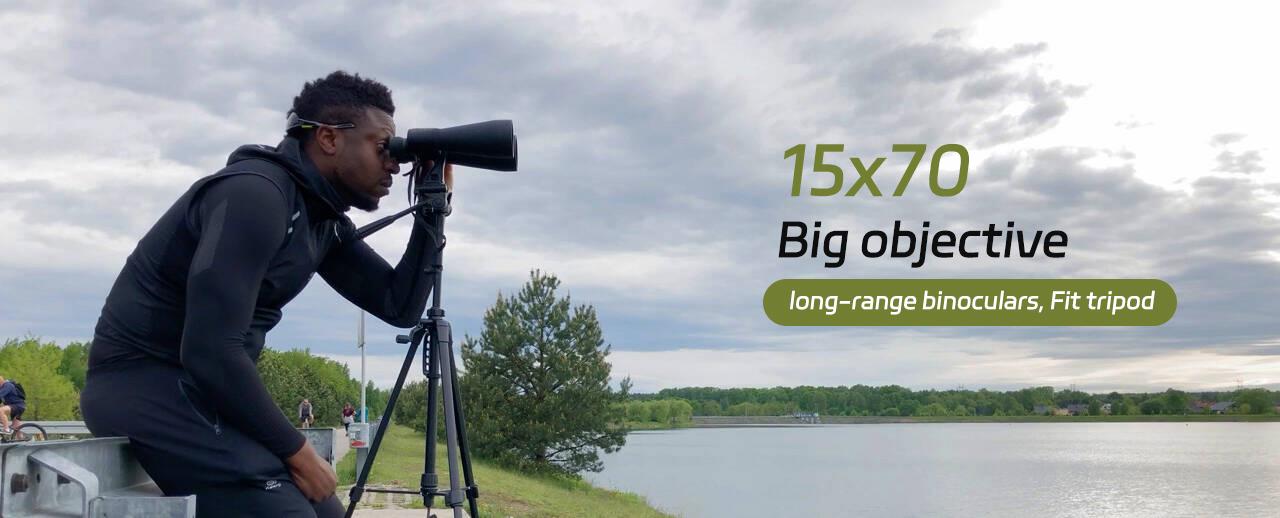What to Look For in High-Powered Long-range Binoculars
You know, there was this customer who lived right at the foot of a snow-capped mountain. He came to me and said he wanted a telescope that could see really far. But he wasn’t into those spotting scopes where you can only look through with one eye. He was after a High-Powered binocular telescope ’cause it’s way more comfy to look with both eyes. It’s a pretty common concern, actually. Lots of folks think the same, especially those who don’t have to lug their binoculars telescope around over long distances. A high-magnification binocular is definitely a solid choice for them.
When it comes to selecting high-powered binoculars for long-distance viewing, many people automatically assume that higher magnification equals better performance. While it’s true that powerful magnification can give you a closer view of distant objects, it is not the only factor to consider when choosing the best binoculars for long-range observation. There are several key features that will determine how well your binoculars perform, including magnification, exit pupil size, objective lens size, image brightness, and stability. Below, I’ll guide you through the essential elements to look for and provide advice on how to pick the best binoculars based on your specific needs.
What to Look For in High-Powered Binoculars
Many people mistakenly think that higher magnification means better binoculars. While more power can bring distant objects closer, it comes with trade-offs. In fact, the best long-distance binoculars are those that strike a balance between magnification, optical quality, comfort, and ease of use. Here are the most important factors to consider:
Magnification & Exit Pupil
The magnification of binoculars is measured by the first number in the specification (e.g., 10x, 12x, 20x). While higher magnification brings distant objects closer, it can also reduce the brightness of the image and make it harder to stabilize the view. This is because, with higher magnification, the exit pupil (the shaft of light exiting the eyepiece) becomes smaller.


For example, the 20×40 Bushnell binoculars. These binoculars have a small exit pupil of just 2mm (calculated by dividing the objective lens size, 40mm, by the magnification, 20x). This is quite small, and unless you’re in ideal lighting conditions where your pupils are fully constricted, this can lead to a dim image and difficulty in lining up the light from the binoculars with your eyes. This misalignment can cause the image to appear dark around the edges, making the binoculars uncomfortable and challenging to use. Why consider the parameter of exit pupil diameter. Very simple, because the average diameter of the human pupil is 4mm.

On the other hand, the Zeiss Dialyt 10x40B binoculars, with a 4mm exit pupil (calculated as 40mm ÷ 10x), offer a more comfortable viewing experience. With a 4mm exit pupil, you are more likely to get a bright, sharp image that is easier to line up with your eyes in various lighting conditions.

In summary, when choosing high-powered binoculars, you should always consider the exit pupil. Larger exit pupils (around 4mm or more) offer better image brightness and comfort, especially during lower-light conditions such as dawn or dusk.
For a deeper understanding of exit pupils and how they impact your viewing experience, check out my detailed guide on exit pupil and why it matters.
Objective Lens Size
The objective lens is the second number in a binocular’s specification (e.g., 10×40). It refers to the diameter of the front lens, usually measured in millimeters. Larger objective lenses allow more light to enter, which leads to a brighter image, especially in low-light conditions. However, increasing the size of the objective lens also increededmeeases the weight and size of the binoculars.
If you increase the magnification without increasing the size of the objective lens, you risk producing a smaller exit pupil, which makes the image darker and harder to see. This is why a higher magnification requires larger objective lenses to maintain image brightness.
For example, if you were to take the 20x magnification and pair it with larger 80mm objective lenses, you would get an exit pupil of 4mm (80mm ÷ 20x). This would provide a bright, high-quality image, similar to the 10×40 Zeiss binoculars, but with much greater magnification. However, larger objective lenses come with a downside: they increase the overall size and weight of the binoculars.
A 20×80 binocular will weigh around 2kg (about 4.4 pounds). While this is ideal for distant viewing, it can be cumbersome and difficult to hold steady. The larger the lenses, the harder it becomes to maintain stability, and the more prone the binoculars are to hand shake, especially when used for long periods.
To counter this issue, many high-powered binoculars come with integrated tripod adapters, which allow you to mount the binoculars on a tripod for extra stability. Using a tripod ensures that the binoculars remain steady, reducing fatigue and providing a clearer, more stable image.
Image Quality & Brightness
When selecting long-distance binoculars, image quality should be a priority. A higher magnification or larger objective lens may not provide the best view if the optical quality is poor. Look for binoculars with multi-coated lenses, which reduce glare and improve light transmission. Higher-quality coatings will result in sharper, brighter, and more accurate colors.
Premium binoculars from brands like Zeiss, Leica, and Swarovski are known for their excellent optical quality. These binoculars typically feature advanced coatings such as Fully Multi-Coated (FMC) lenses, which ensure maximum light transmission and enhance image clarity. While these binoculars can be more expensive, the optical performance they offer is unparalleled.

You know, the optical system is super important for how well a high-powered binoculars telescope works. See, when you’ve got a high magnification, the light gets all wonky after going through lots of refractions, and you end up with double images. Figuring out how to make sure the light from both the left and right tube goes into your eyes nice and parallel is really tough. It takes some seriously precise manufacturing tricks, like getting the refraction angles of the prisms just right and the angles for each lens when they’re put in telescope. That’s why a lot of high-magnification telescopes are monocular ones, like spotting scopes and astronomical telescopes. They’re all single-tube to dodge the problem of light coming in parallel. So, when you’re buying, you’ve gotta be really careful and tell the difference. But, just like with blue light dispersion, you can only cut down on those double images, not get rid of them completely. It’s just a built-in flaw with High-Powered telescopes.

Stability and Tripod Use
As mentioned earlier, the larger the magnification and objective lens size, the more difficult it becomes to hold binoculars steady, especially for extended periods. This is where a tripod becomes invaluable. If you plan to use high-powered binoculars for long-distance viewing, it’s highly recommended to use a tripod to stabilize the image.
A tripod-mounted binocular setup can turn even the heaviest binoculars into a stable, easy-to-use tool for long-range observation. Most high-powered binoculars in the 20×80 or 15×70 range come with built-in tripod adapters, making it easy to mount them on a tripod. For smaller, more portable binoculars, consider purchasing a binocular tripod mount or a tabletop tripod for added stability.
If you plan on using your binoculars for astronomy, bird watching, or long-distance wildlife observation, investing in a good quality tripod will make a world of difference. A stable image allows for more precise observations and reduces eye strain, which can be a concern with hand-held binoculars.
Additional Considerations
- Field of View (FOV): Higher magnification typically results in a narrower field of view. If you need to scan large areas, you might want to balance magnification with a wider field of view. A wider FOV is particularly useful for activities like bird watching or tracking moving objects.

- Waterproofing and Durability: If you’ll be using your binoculars in challenging weather conditions, look for models that are waterproofand fog-resistant. Many high-end binoculars come with nitrogen-purged, waterproof seals to protect the optics from moisture.

- Comfort and Ergonomics: High-powered binoculars with large objective lenses tend to be heavier. Make sure the binoculars are comfortable to hold, especially if you plan on using them for extended periods. Look for features like ergonomic grips, adjustable eyecups, and long eye relieffor users who wear glasses.
 ConclusionChoosing the best high-powered binoculars for long-distance viewing involves balancing several important factors: magnification, objective lens size, exit pupil, image quality, and stability. While powerful magnification and large objective lenses can enhance your viewing experience, they also come with challenges, such as image brightness and stability. By considering all these factors and selecting binoculars that fit your specific needs—whether for bird watching, stargazing, or wildlife observation—you’ll ensure you get the best possible performance for long-range viewing.
ConclusionChoosing the best high-powered binoculars for long-distance viewing involves balancing several important factors: magnification, objective lens size, exit pupil, image quality, and stability. While powerful magnification and large objective lenses can enhance your viewing experience, they also come with challenges, such as image brightness and stability. By considering all these factors and selecting binoculars that fit your specific needs—whether for bird watching, stargazing, or wildlife observation—you’ll ensure you get the best possible performance for long-range viewing.
Remember to choose binoculars that are comfortable to use, offer bright, sharp images, and are easy to stabilize with a tripod if necessary. With the right pair, you can enjoy breathtaking views of distant landscapes, wildlife, and even the stars.







